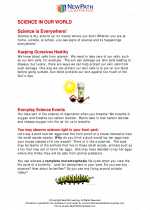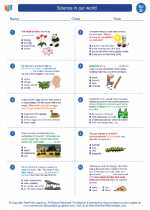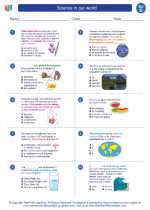Tectonic Movements
Tectonic movements refer to the large-scale movements of the Earth's lithosphere, which are driven by the forces generated within the Earth. These movements result in the formation of geological features such as mountains, earthquakes, and volcanoes.
Types of Tectonic Movements
There are three main types of tectonic movements:
- Divergent Boundaries: These occur where tectonic plates move away from each other. This movement leads to the formation of rift valleys and mid-ocean ridges.
- Convergent Boundaries: At convergent boundaries, tectonic plates move towards each other. This can result in the formation of mountain ranges, subduction zones, and volcanic arcs.
- Transform Boundaries: Transform boundaries occur where tectonic plates slide past each other horizontally. This movement can cause earthquakes along fault lines.
Effects of Tectonic Movements
Tectonic movements have several significant effects on the Earth's surface:
- Earthquakes: The movement of tectonic plates can cause the Earth's crust to rupture, leading to the release of seismic energy in the form of earthquakes.
- Volcanism: Tectonic movements can lead to the formation of volcanoes, as molten rock from the Earth's mantle can reach the surface through volcanic eruptions.
- Mountain Building: Convergent tectonic movements can result in the uplift and folding of the Earth's crust, leading to the formation of mountain ranges.
- Seafloor Spreading: Divergent tectonic movements can create new oceanic crust as magma rises from the mantle and solidifies at mid-ocean ridges.
Study Guide
To understand tectonic movements, it's important to study the following concepts:
- Plate Tectonics Theory
- Types of Tectonic Boundaries
- Causes and Effects of Earthquakes
- Formation of Volcanoes
- Mountain Building Processes
- Seafloor Spreading
Additionally, it's helpful to explore real-world examples of tectonic movements, such as the formation of the Himalayas, the Pacific Ring of Fire, and the Mid-Atlantic Ridge.
.◂Science Worksheets and Study Guides Fourth Grade. Science in our world
Study Guide Science in our world - 4th gr.
Science in our world - 4th gr.  Worksheet/Answer key
Worksheet/Answer key Science in our world - 4th gr.
Science in our world - 4th gr.  Worksheet/Answer key
Worksheet/Answer key Science in our world - 4th gr.
Science in our world - 4th gr.  Worksheet/Answer key
Worksheet/Answer key Science in our world - 4th gr.
Science in our world - 4th gr.  Vocabulary/Answer key
Vocabulary/Answer key Science in our world - 4th gr.
Science in our world - 4th gr. 

 Worksheet/Answer key
Worksheet/Answer key
 Worksheet/Answer key
Worksheet/Answer key
 Worksheet/Answer key
Worksheet/Answer key
 Vocabulary/Answer key
Vocabulary/Answer key

The resources above cover the following skills:
History and Nature of Science: A student should understand the history and nature of science. A student who meets the content standard should:
Develop an understanding that historical perspectives of scientific explanations demonstrate that scientific knowledge changes over time, building on prior knowledge.
Develop an understanding that scientific knowledge is ongoing and subject to change as new evidence becomes available through experimental and/or observational confirmation(s).